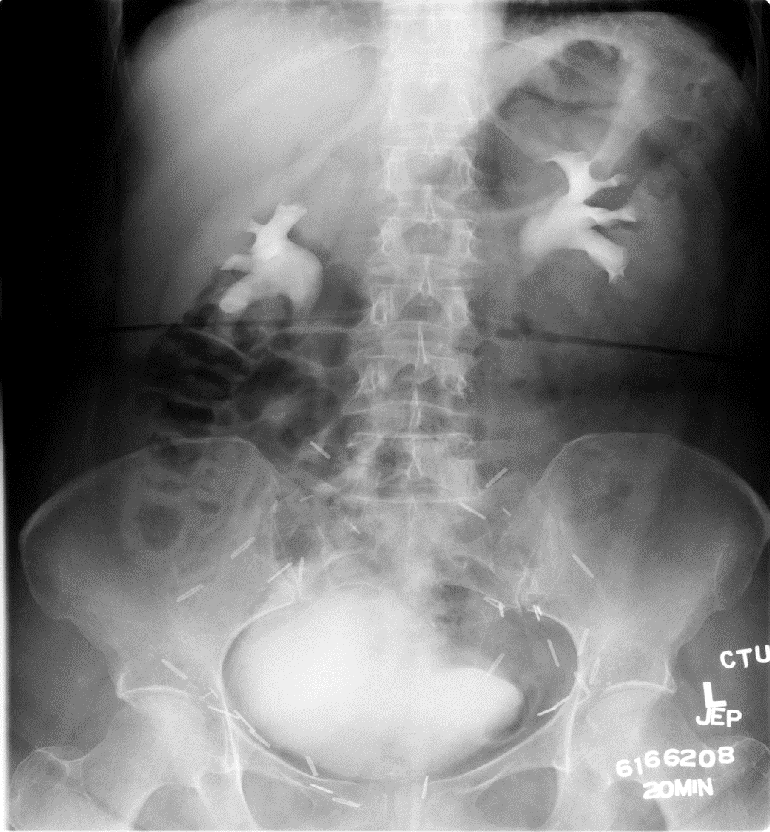Orthotopic Neobladder Reconstruction Restores Quality of Life for Female Cystectomy Patients
In This Article
- Advantages of orthotopic neobladder reconstruction include avoiding the long-term use of hardware or appliances, and the improvement of self-confidence and quality of life for patients
- Complications include urinary leaks and retention, blood clots and infection, and are managed conservatively and effectively
- Scrupulous selection of patients is required since significant contraindications exist
For carefully-selected bladder cancer patients who have undergone cystectomy, orthotopic neobladder reconstruction is becoming the diversion procedure of choice. The surgeon uses the patient’s own intestinal tissues in the procedure to create a urinary reservoir (Figures 1 and 2).
Subscribe to the latest updates from Urology Advances in Motion
While initially the procedure was more successful in men, a team led by Michael L. Blute, MD, chief of the Department of Urology at Massachusetts General Hospital, is now also seeing successful outcomes in women as well. The goal and one of the benefits of the procedure for neobladder patients is avoiding the long-term use of hardware or appliances.
“By partnering with patients, we strive in neobladder procedures to restore as fully as we can not only function, but also lifestyle and self-image following radical cystectomy," Dr. Blute says.
Advances in neobladder reconstruction that are driving urologic surgeons to offer it to female patients include:
- The elaboration of microanatomy of female continence mechanisms
- Greater understanding of the natural history of urothelial cancer in women
- Elucidation of the neurovascular and fascial relationships of the female rhabdosphincter and pelvis
"Our department has decades of experience researching urogenital anatomy and radical cystectomy, with hundreds of surgical procedures to restore bladder function and provide continuity of care for our patients," Dr. Blute says.

Figure 1: Contrast study female neobladder three months after surgery

Figure 2: CTU female neobladder post-void residual
Advantages of the Neobladder Reconstruction
Among the reasons orthotopic neobladder reconstruction is a desirable form of urinary diversion are that it:
- Eliminates the need for a cutaneous stoma or collection device. This appeals to patients’ psychological and physical preferences, as well as reduces the chances of infection from stomal complications
- Provides patients the ability to preserve a near-normal volitional voiding pattern
- Allows patients to store a normal volume of urine until socially acceptable to void
A 2000 quality-of-life study in the World Journal of Urology comparing urinary diversion techniques of orthotopic neobladder versus ileal conduit indicates neobladder patients had higher satisfaction with their post-surgical outcome. Scales included self-confidence, better rehabilitation experiences and more complete recovery of lifestyle.
The study of 102 patients compared orthotopic neobladder (67.6% of sample) to ileal conduit urinary diversions in 33 patients (32.4%), documenting preference trends that hold generally true today, according to Dr. Blute.
Nearly 93% of neobladder patients responded that they “did not feel handicapped at all,” compared to 51.5% of ileal conduit patients. Of the neobladder patients, 74.6% felt “absolutely safe” with their urinary diversion, compared to 33.3% of patients with the ileal conduit. In terms of daytime urine leakage, 1.5% of the neobladder patients reported wetting clothes from leaks, compared to 48.5% of ileal conduit patients reporting wetting clothes.
Overall, the study showed 97% of neobladder patients would recommend the same diversion procedure to a friend, compared to 36% of ileal conduit patients.
A separate, long-term 2006 study of bladder cancer survivors published in Cancer found no significant long-term difference in quality of life between continent and conduit diversion approaches. The topic requires further study with larger sample sizes.
Complications and Risks
As with any surgical procedure, orthotopic neobladder reconstruction carries potential risks and complications, including:
- Urinary leaks and incontinence, especially at night
- Urinary retention
- Electrolyte disorder
- Infection
- Blood clots
Dr. Blute and co-authors, writing in the 2008 Textbook of Reconstructive Urologic Surgery, report that in women, complication rates following orthotopic reconstruction were reported to be between 9 to 24%. The complications consist primarily of postoperative ileus.
A 2008 outcome study in the Journal of Urology reviewed 177 neobladder patients six to 125 months postoperatively for functional outcome and early-stage and late-stage complications. Early-stage complications included hemorrhage, wound infection and deep vein thrombosis and were managed conservatively. Late-stage complications included stone disease, ureteroileal stricture, intestinal obstruction and others. All were managed routinely, with patients experiencing good outcomes.
While the data show that complications develop in a significant number of patients, most are managed conservatively and effectively. In the long-term, to manage complications properly, neobladder patients require close, lifelong surveillance.
Contraindications
While the neobladder is typically successful in carefully-selected patients, Dr. Blute emphasizes it is not an option for all patients. Scrupulous patient selection is the key to excellent outcomes.
Contraindications to orthotopic neobladder creation include patients with:
- Intraoperative frozen section of the distal urethral margin that is positive for cancer
- Inability or unwillingness to perform self-catheterization
- Impaired renal function
- Intestinal disease, renal and liver impairment
- Insufficient ileum for use, due to either inflammatory bowel disease or previous surgical resection
Future of Neobladder Reconstruction
Neobladder reconstruction in women will continue to be an important option to offer carefully selected patients who prioritize an appliance-free and active recovery from radical cystectomy.
"Mass General’s integrated, comprehensive expertise—from the first pre-surgical consult, to the surgery itself, to recovery and aftercare—is what makes the difference," Dr. Blute concludes. “We all want the same thing: to help patients achieve the highest quality of life possible. And we often see that. We have some patients playing a full 18 holes of golf—just as they did before the surgery.”
Learn about the Department of Urology